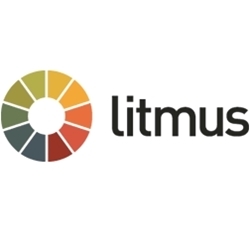Way back in 2016, Litmus published an e-book titled Email Marketing in 2020 that polled 20 marketing experts on where they thought the industry was headed. Admittedly, those types of reports are always risky—particularly when you're attempting to look that far ahead in a world where major shifts can happen by the month or quarter.
Four years? That's about as easy to predict as the likelihood of making Mars habitable.
Looking back on it now, however, many of the predictions from our experts came true. One predicted that email readers would play a major role in deliverability and email prioritization in the inbox (check). Someone suggested machine-learning would open the door to new levels of personalization (double check). And another called for the rise of new levels of sophisticated targeting (yep!).
But one general prediction in particular stood out—and it came from Litmus's co-founder: Email will become more ubiquitous, valuable, and integrated into our lives and devices, and simultaneously ever more invisible.
It's Almost 2020: So, What's Next for Email?
Well, here we are. It's November 2019 and we're not far away from a future that seemed so distant in 2016.
Here's what we know: Email continues to be one of the dominant channels in marketing, and many studies—including our own—suggest it remains the most effective in driving ROI, delivering $42 for every $1 spent on it. But what's next? How will email change over the next year? Two years? Ten years?
Let's stay focused on the near-term. Here are some trends that we see shaping the future of marketing in 2020:
- Interactivity. Interactivity can be a tough sell for B2B marketers, because Outlook makes up the majority of their users' email clients—and Outlook doesn't like anything that could impact deliverability or security. But that doesn't mean interactivity isn't possible.
Some interactivity is low-lift and can be built into templates, snippets, and partials. This would include things like hamburger menus and hover effects for buttons and links. Since the time investment to get those things up and running is relatively low, they're worth it for most B2B brands, even if a substantial portion of your subscribers are on Outlook.
(For more on building interactive features into your emails, check out this guide to the hottest trend in email.)
- Accessibility. Accessibility serves as one of the founding pillars of user experience and design. For email, it means making sure that everyone can receive and understand your message, regardless of any disabilities or assistive devices they may be using.
You can think of accessibility in email as an extension of dealing with email clients with poor support. Including workarounds and fallbacks ensures every subscriber receives a positive experience.
(Want to make your emails more accessible? Check out Litmus's Ultimate Guide to Email Accessibility.)
- Personalization and dynamic content. This isn't a new trend necessarily, but it's going to continue being a prominent one. The focus on dynamic content is in part due to the rise of AI-driven personalization, which allows tailored email content on a scale and level of granularity that's otherwise impossible.
AI features like predictive fatigue or predictive offers will become the norm in 2020 and beyond, enabling marketers to more effectively tailor experiences to each customer's behaviors, intent, interests, and motivations.
Those three things aren't inclusive of everything that will impact email over the next couple of years. But they'll significantly impact how most email marketers approach their campaigns and strategies.
If you start building your strategy around them today, then you should be well ahead of the game once they become mainstream.
Ready to Dive Deeper into the Trends Shaping Email?
Want to learn more about what's happening in the world of email and what's coming down the road?
In our 2019 State of Email Report, we provide a comprehensive look at the data, trends, and innovations that have shaped the email industry in 2019, and we offer a view into how they're likely to affect your email program in the future.
If we know one thing, it's that the email landscape shifts a little bit by the day. And though we may never be able to fully conquer it, we can put ourselves in the best possible position to stay on top of the tactics and innovations that have the greatest likelihood to have the greatest impact our future success.




